Several years back, I drove from my driveway in Idaho Falls all the way to Dead Horse, where I caught a glimpse of the Arctic Ocean, and then back again. It was a 10-week journey, and, when it was all said and done, I put about 20,000 miles on the new tires of my FJ Cruiser and my small camper I towed virtually the entire time.
I learned three important lessons on that trip. First, just because your vehicle is rated appropriately and can tow 5,000 pounds doesn’t mean it should tow 5,000 pounds. Second, when a salesman at an RV dealership takes a look at your rig, without actually pulling out the specs and doing at least some tertiary math, and says, “Yeah, that’ll tow this thing, no problem,” it’s on you for believing him. The $1,100 service appointment at the end of the summer was a bit more than I expected. Brakes. Shocks. Struts. It was one of the most painful credit card swipes of my life.
The third lesson?
The Green Drake might be the most important mayfly hatch in the West. And not just the American West. Over a particularly wet summer in 2016, from the end of June until the second week of September, it seemed that everywhere I ventured, the Green Drake was there to meet me.
The western Green Drake (Drunella grandis) is not a subtle fly, and when you see it lifting off the water or crawling on streamside vegetation, you can’t miss it. It’s absolutely stunning. Regal, even. And, over the course of more than two months, as I also managed to time my drive north with a band of incoming thunderstorms, it was easily the most-used fly in my box. In fact, I had to find far-flung Canadian fly shops, not once, but twice, in order to buy size 10 dry-fly hooks that matched the hatch. From my first stop on Montana’s Ruby River right before the Fourth of July to the Buckinghorse River in central British Columbia a month later, the Green Drake rode rain-swollen water like a Viking flagship. And the fish, from beefy west slope cutthroats in southern Alberta’s Oldman River to fat Arctic grayling on Alaska’s Gulkana River, were on these bugs like a sugar addict on the wares in a pastry shop.
Like all mayflies, the Green Drake is entirely aquatic until it emerges from the water in its adult, or dun, stage. In its nymphal stage, the drake is a “crawler,” and it’s important trout food in this stage, largely because it tends to be a bit oversized compared to other mayfly larvae. But it really earns its stripes as an emerging bug.
Given its size (I fished a handful of size 8 duns in B.C., but, for the most part, the flies along my journey ran in the size 10 to 12 range), it takes some time for its wings to dry, which means it rides the currents, wings up, for quite some time before it’s able to take flight. These longer cruises in the current give trout and grayling beneath them a longer opportunity to go and get them.
And that’s what they do. It wasn’t unusual, with a good drift, to watch as not one, but two or sometimes three, fish would appear out of the cold, clear ether and rise to the fly, with the winner being the fish with the best late burst.
I, of course, was the true beneficiary, as I enjoyed the visual aspect on that trip perhaps more than another adventure I’ve undertaken over the course of my life. In fact, I remember an entire four-day stretch on Sukunka River south of the town of Chetwynd, B.C., where I fished nothing but a size 10 Green Drake and had an absolute blast catching native rainbows as they crushed the fly, especially during and shortly following a series of afternoon rainstorms. On the fourth day, as I was playing a nice fish to hand, I watched as a massive bull trout magically appeared out of the depths and followed the struggling rainbow into shallows. Then I finally switched it up, and managed to catch that 24-inch char on a streamer.
Farther north, in a little wayside B.C. provincial park on the Buckinghorse River, the rainbows faded out and the grayling showed up. The cool, rain-spotted weather continued, and with days that lasted 16 or even 17 hours, I was in dry-fly heaven.
The drakes, which tend to fade a bit when the weather gets warmer and dryer, kept bursting from the rivers along the Alaska Highway as the cool, wet summer continued. Several times, I stopped and chatted with idle Canadian wildfire crews — like the Green Drakes along the spine of the Rockies, they were enjoying a summer that didn’t, for a change, include smoke-shrouded spruce forests and long, hot days spent digging fire lines.
And at every stop, try as I might to dig through the fly box for something new, I’d see the drakes lifting off from the water like DeHavillands taking flight from a remote lake, and I knew it made little sense to tie anything on but an honest imitation of the mayfly I was apparently chasing to the Arctic.
A week or so later, as I stood on the banks of a little creek outside of Whitehorse, in the Yukon territory, I marveled at how proudly the Green Drakes seemed to carry themselves as they raised their wings to dry and floated effortlessly through choppy water. One afternoon, as the thunderheads built on the horizon, I didn’t even string up a fly rod. I chose instead, to soak up a little sub-Arctic sun in the fresh, green streamside grass before the rain hit. And all the while, I watched the drakes hatch.
For a time, I made little bets with myself as the flies drifted by on the current. Would that one be eaten by an introduced rainbow trout — for I was surely in grayling country — before it could dry its wings and fly into the willows?
A couple of weeks later, on the Chena River north of Fairbanks, as the rain continued to fall, the drakes kept popping. It was a race to the Arctic it appeared, and, as it turned out, it was a race I’d win.
Shortly after leaving Fairbanks and heading up the Dalton Highway in late August, the rain finally broke, and the sun bathed the stubby, black spruce forests in a late-summer glow. The drakes all but disappeared as the temperatures north of the Arctic Circle climbed well into the 80s — certainly not the expected norm, but in the climate change era, these extreme weather events are becoming more and more common. Not long after, when I topped Atigun Pass and dropped down off the Brooks Range onto the tundra, the big mayflies were gone, altogether, victims of the boreal heat wave.
No matter. The grayling in streams like the Kapuruk River and in Osrukurik Creek were game for other offerings — fat, foam bodied attractors did the trick. But, after a summer spent chasing the drakes, it felt like something was missing. Like something just wasn’t right. For the next week, I fished the tundra without my summer-long mayfly companion.
Later, toward the end of August, as I was making my way south and wrapping up the adventure, I stopped at a little bar and grill in the town of Haines Junction, back in the Yukon. I sat outside on the deck overlooking a little creek that ran close to town. It was a beautiful day, and rain clouds were building over the mountains that separated this inland community from Haines, Alaska, and my next stop, where I’d put my whole rig on the ferry and ride south through Inside Passage, eventually to Prince Rupert.
As I sprinkled a little malt vinegar on my fish and chips, a sizable bug lighted on my wrist. Instinctively, I went to slap what I assumed was a mosquito, only to realize that there, over lunch in this remote Canadian town, the Green Drakes were back. I took a closer look at the stream that flowed through willows below the overlook, and, sure enough, the water was freckled with little upright mayfly sailboats. Every now and then, a small grayling would slap the water, grabbing a meal in the process.
I smiled at the return of my dependable fishing companion, and I marveled at my run of good fortune that stretched over most of the summer of 2016. And today, as we struggle through a pandemic that is keeping the vast majority of us home — the Canadian border is closed to all but essential travel — I recall that summer as the most trouble-free I can remember, dating all the way back to my youth and the freedom that extended only to the local park and that ended the second the street lights hummed to life.
I think everyone should have a summer like that. At least one, more if you can make it happen. Now, with summer upon us and our world in turmoil, I’m grateful for my one summer of simple serendipity, where the fish and the weather and the bugs all came together to craft something approaching perfection.
It was the summer I spent chasing the drakes across the North.




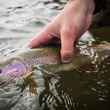
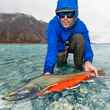




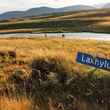
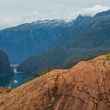


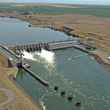




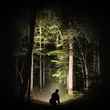
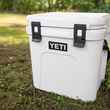



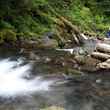
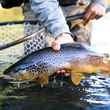



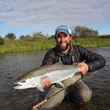
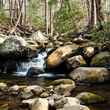
Comments
Dennis Merino replied on Permalink
What a spectacular adventure. I’m wiping the drool off of my face. Thank you for letting me feed on your memory. Just truly inspiring.
Roger Thompson replied on Permalink
Well done, Chris, well done!
Steve replied on Permalink
Wonderful article Mr. Hunt. I am fortunate to live in northern B.C. and have travelled past many of the place names in your article. Your suggestion of experiencing a summer free of responsibility struck me in particular. After struggling through the ravages of cancer for the past few years, I’m healthy enough to be chasing adventures again. It resulted in an awakening of the need to relish my own simple moments.
Your article contains enough temptation for others to consider their own trouble free summer. Thank you.
Pages